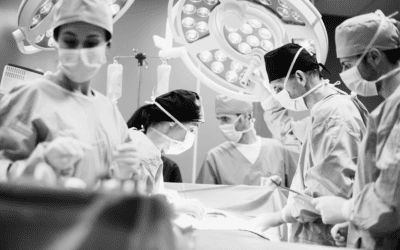In cardiac surgery, it is commonplace for Anaesthetists to place a sheath introducer, or pulmonary artery catheter, when high volume access is required, along with a standard 4-lumen/quad central venous catheter (CVC) for multi-drug delivery and haemodynamic management. While this approach meets clinical requirements, it can lead to number of potential problems, including additional procedural time and delays in treatment, higher risk to the already critically ill patient if placed by inexperienced operators, and significant complications, for example, increased infection risk to the patient, and mortality[1].
To address critical needs in high-stakes surgical environments, Anaesthetists should consider the use of a less invasive, and all-in-one solution such as a 5-lumen catheter with a high-flow distal lumen for high-volume infusion, coupled with four other access points for multi-drug delivery, and haemodynamic management. These high-flow catheters enable the administration of up to 1.2 litres of fluid in three minutes, which is a critical function where rapid volume resuscitation is essential to patient outcomes.
Using a device with these characteristics embraces innovation, whilst aligning with infection control and patient safety goals, and ensures full capability to quickly stabilise a patient with rapid volume infusions negating the need and time to place a second line.
Supporting Safer, Smarter Care – Expanding the Benefits
Eliminating the need for two separate access lines for rapid infusion, has huge benefits for both patients and within cardiac surgery. Using one device as an all-in-one solution, not only reduces complexity but also supports infection control and workflow efficiency, potentially improving outcomes for patients, and help to avoid serious complications.
There are several additional benefits to using a 5-lumen high-flow CVC, including:
- A simpler, less invasive alternative to other current commonplace devices
- Improved efficiency in line placement and patient preparation – one device replaces multiple lines, simplifying the process of preparing the patient for surgery, in potentially short time frames
- Patient safety and infection control -with fewer catheter insertions comes reduced number of entry points, therefore reducing the potential for contamination and the overall infection risk. This also decreases the potential for line-related complications e.g. mechanical or insertion complications.
- A 5-lumen high-flow CVC offers safe and reliable vascular access, and is a streamlined alternative, offering both rapid high-volume infusions to quickly stabilise a patient, and multi-drug delivery within one device.

Conclusion
By simplifying central venous access in these settings, especially within cardiac surgery, cardiac centres are not only improving their efficiency but also enhancing patient safety and supporting infection control goals. It is therefore important to consider the unique offering of a versatile 5-lumen high-flow catheter which consistently provides a flow rate that exceeds clinical needs of over one litre of fluid every three minutes, instilling confidence in the surgical team that they can achieve the rate of fluid infusion required.
References
- Chatterjee K. The Swan-Ganz catheters: past, present, and future. A viewpoint. Circulation. 2009 Jan 6;119(1):147-52. doi: 10.1161/CIRCULATIONAHA.108.811141. Erratum in: Circulation. 2009 Jun 2;119(21):e548. PMID: 19124674.



